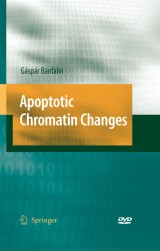Details

Apoptotic Chromatin Changes
|
CHF 236.00 |
|
| Verlag: | Springer |
| Format: | |
| Veröffentl.: | 24.02.2009 |
| ISBN/EAN: | 9781402095610 |
| Sprache: | englisch |
| Anzahl Seiten: | 412 |
Dieses eBook enthält ein Wasserzeichen.
Beschreibungen
The writing of this book is based on: 1. earlier experience writing textbooks for biology students with a university-level background in biology and biochemistry with many (>200) ?gures in these books (in Hungarian), 2. and on the necessity to present university lectures as power point presentations to catch the interest of s- dents. The author realizes that young readers who were grown up in an information society are relactant to read too much unless they have to take exams. Even then they prefer books which contain illustrations for a better understanding. In collaboration with colleagues, referees and members of the publishing staff an extensive set of photographs and illustrations were collected to provide a graphic follow-up to the text. Further aids for the student, instructor and the curious reader are provided by summaries, extensive sets of readings and references for each chapter, a glossary of the terms, list of abbreviations and a DVD with a red-blue eyeglass to visualize three dimensional chromatin structures. The reader could ask: Why another book on apoptosis? The answer to the question is related to the de?nition of the process. The term apoptosis has been introduced to describe typical morphological changes leading to controlled se- destruction of cells. The ?rst demonstrated biochemical feature of this type of cell death was internucleosomal fragmentation, which was occasionally preceded by the generation of large DNA fragments.
DNA Empire.- Structural Organization of DNA.- Chromatin Condensation.- Apoptosis.- Apoptotic Chromatin Changes.
<p>The Greek word apoptosis was used first by Hippocrates as a synonyme of dislocations of the bones, structural changes related to tissue, by Marcus Aurelius in political and social context as failure and decline. The physician Galen extended the medical meaning of apoptosis to wound healing and inflammation. <br>Apoptosis, or cell suicide is an integral part of life cycle of plants and animals indicated by the loss of 140-190g (50-70 billion) cells each day in the human adult, amounting to the body weight in one year. The growing interest in apoptosis is indicated by the number of scientific publications since the 1990s which is now more than 140,000 and will exceed 160,000 by the end of 2008.<br>The unique feature of this book is the use of synhronized and reversibly permeabilized cells allowing to visualize the dynamic nature of chromatin condensation through transitory chromatin and chromosomal forms including changes upon genotoxic treatment, which were not seen earlier. The chromatin condensation process is illustrated from string (DNA) to rope (chromosomes) in more than 160 figures. The interdisciplinary nature of studies summarized in the book facilitate the global view of readers interested in the higher order structure of nucleic acids. The wealth of additional information will attract a wide population of readers. The natural audience engaged in DNA research such as genetics, cell biology, biochemistry, molecular biology will find that it contains essential material.</p>
The first to show the dynamic change of chromatin structures in a cell cycle-dependent manner Describes the intermediates of chromatin condensation Distinguishes between chromatin and chromosomal forms Describes how round shaped chromatin bodies, the first interphase chromosomes are converted to linear chromosomes Proves the linear attachment of chromosomes including interphase and metaphase chromosomes Visualizes chromatin changes upon genotoxic treatment (chemical carcinogenesis, heavy metal, irradiation) Provides the reader with additional information in the glossary section Helps the reader with a detailed list of abbreviations Helps to understand three dimensionality and seemingly difficult terms such as supercoiling Demonstrates that Drosophila chromosomes consist of smaller units called rodlets Demonstrates that the nucleosomal arrangement of Drosophila chromatin consist of meandering loops Reevaluates data of nucleosomal strings and provides a plectonemic chromatin model of chromosome condensation in Drosophila cells

















